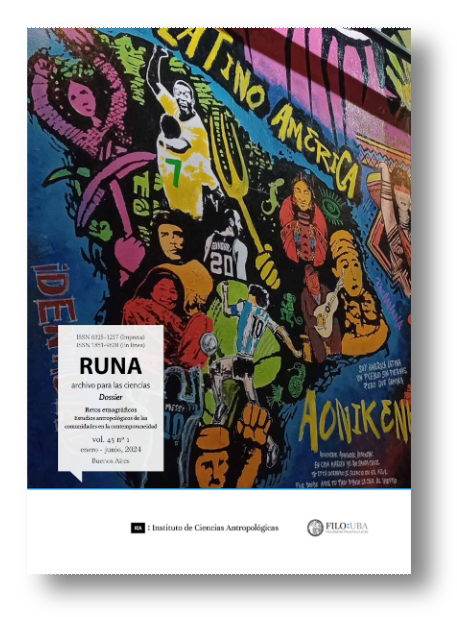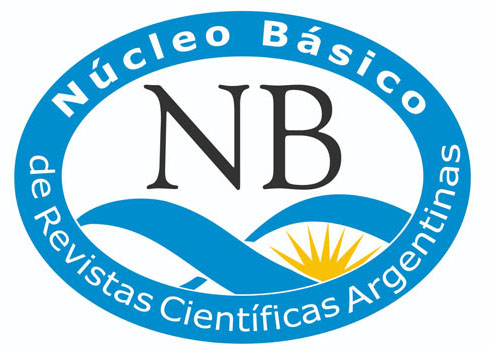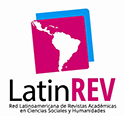The a priori of the indigenous community and its future orientation in two towns of Oaxaca, Mexico
Abstract
The intention of this paper is to contribute to the debate opened by the anthropologies of the future and their assumption that the configuration of contemporary social and cultural dynamics can be causally designed from a future orientation. I take up the thesis to consider whether this approach can be applied to the indigenous community, knowing that this is the materialization of tradition and custom. Using some ethnographic examples from two indigenous communities in the Mexican state of Oaxaca, I sketch interpretative lines where I reconcile historical heritage, morphology and community, with orientations, social action and future. I start from the hypothesis that the common acts as an a priori of the action of subjects that orient, with their practices, the community towards possible futures.Downloads
References
Aguirre, G. (1973). Regiones de refugio. El desarrollo de la comunidad y el proceso dominical en mestizoamérica. México: Instituto Nacional Indigenista.
Apel, K (1995). La pragmática trascendental y los problemas éticos norte-sur. En Dussel, E. (comp.) Debate en torno a la ética del discurso de Apel. México: Siglo XXI, pp. 37-54.
Archer, M. (2014). Teoría social realista. El enfoque morfogenético. Santiago de Chile: Universidad Alberto Hurtado.
Appadurai, A. (2015). El futuro como hecho cultural. Ensayos sobre la condición global. Buenos Aires: Fondo de Cultura Económica.
Barabas, A. y Bartolomé, M. (1990). Etnicidad y pluralismo cultural: la dinámica étnica en Oaxaca. México: CNACULTA.
Bautista N y Contreras R. (2023). Sentir el futuro, descentrar la antropología. Una invitación para pensar y hascer etnografía en los bordes. En Andamios. Revista de investigación social, 2023, 51, pp. 303-321. https://doi.org/10.29092/uacm.v20i51.978.
Bartolomé, M y Barabas, A. (1996). La pluralidad en peligro. Oaxaca: INAH-INI.
Bonfil, G. (2005). México profundo. Una civilización negada. México: Debolsillo.
Bryant, R. y Knight, D. (2019). The Anthropology of Future. Cambridge: University of Cambridge.
Caso, A. (1971) La comunidad indígena. México: Sepsetentas.
De la Fuente J. (1964). Educación, antropología y desarrollo de la comunidad. México: Instituto Nacional Indigenista.
Gómez, A. (1992). Sobre actores y tramoyas. La explicación situacional de la acción individual. Barcelona: Anthropos.
Joas, H. (1996). The Creativity of Action. Chicago: University of Chicago Press.
Habermas, J (2001). Teoría de la acción comunicativa: complementos y estudios previos. Madrid: Cátedra.
Lisbona, M. (comp.). (2009). La comunidad a debate. Reflexiones sobre el concepto de comunidad en el México contemporáneo. Zamora: El Colegio de Michoacán y la Universidad de Ciencias y Artes de Chiapas.
Miller, D y Slater, D. (2000). The internet. An Ethnographic Approach. New York: Berg.
Osorio, O. (2023). El concepto de comunidad en los proyectos de intervención comunitaria: disonancias, opacidades y rupturas. Alteridades, 2023, 33(65), 61-7. https://doi.org/10.24275/uam/izt/dcsh/alteridades/2023v33n65/
Pink, S y Salazar, J. (2017). Antropologies and futures: setting the agenda. En Salazar, J., Pink, S., Irving, A. y Sjöberg, J. Antrhopologies and Futures. Researching Emergin and Uncertain Worlds. New York: Bloomsbury.
Schatzki, T. (2010). The timespace of human activity. Maryland: Lexington Books.
Warman, A, Nolasco, M., Bonfil, G., Olivera, M. y Valencia, E. (1970). De eso que llaman antropología mexicana. México: Editorial Nuestro Tiempo.

Runa, archivos para las ciencias is a publication of the Instituto de Ciencias Antropológicas, Facultad de Filosofía y Letras, Universidad de Buenos Aires and is distributed under a Creative Commons Attribution 4.0 International License.
Runa maintains its commitment to the policies of Open Access to scientific information, considering that both scientific publications and publicly funded research should circulate on the Internet freely, free of charge and without restrictions.
The contents and opinions expressed in published articles are the sole responsibility of their authors.



















